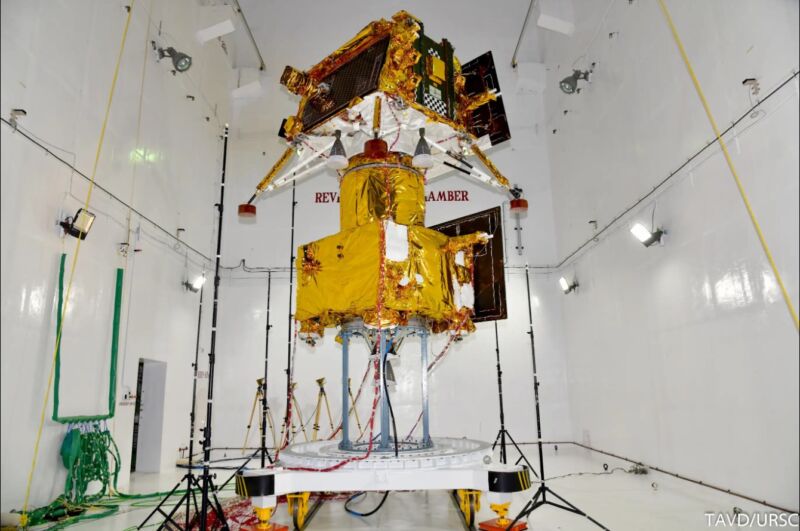
Enlarge / India's Chandrayaan-3 lunar spacecraft undergoes accoustic testing. (credit: ISRO)
As anyone who has been paying attention to space exploration knows, the Moon is red-hot. Up to half a dozen missions may launch to the lunar surface in the next six months, heralding a new era of Moon exploration.
It has not always been so. Following the Space Race in the 1960s and early 1970s, NASA and the Soviet Union backed off their Moon exploration programs. NASA sent probes to the far-flung corners of the Solar System, and the US space agency and Russian space program focused their human activities in low-Earth orbit, constructing and inhabiting a series of space stations.
There have been three primary drivers of renewed interest in the Moon. The first was the discovery and confirmation in the 1990s and early 2000s that water ice is likely to exist at the lunar poles in permanently shadowed craters. The presence of abundant water, providing oxygen and hydrogen resources, has given space agencies a new reason to explore the poles.
No comments:
Post a Comment